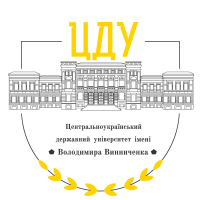AESTHETICS OF THE LINGUISTIC SIGN-SYMBOL THE SOURCE IN THE POETIC CONTINUUM OF VASYL HOLOBORODKO
Keywords:
linguistic-aesthetic sign well, word-image, poetic language, folklore, linguistic-aesthetic sign-symbol, folklore-song sign, linguistic picture of the world, aesthetics of language, semantics, sema, emotionally-expressive, connotation.Abstract
The article attempts to consider the semantics and connotative shades of the linguistic-aesthetic sign-symbol well in the poetic language of Vasyl Holoborodko. The peculiarities of the use of synonymous equivalents for the designation of hydro objects for water extraction and consumption, which are used by the artist as figurative-poetic signs-symbols, are clarified. The semantic and emotional-expressive load in the texts of the word-image is characterized. The specificity of the artist's figurative rethinking of the ethnonym is substantiated. In the process of analysis it was established that the well is a sign-symbol inherent in all civilizational cultures; the name of the well is poetic, characteristic both for everyday use and for folklore. In V. Holoborodko's poetic discourse we mostly fix the word-image of a well in unity with the concepts of water, bucket and actions to drink water, go for water, dig a well, etc. Krynytsia - in the poetic world reproduction of V. Holoborodko - a symbol of earthly life, a symbol of eternal existence, a sign of cosmic existence. At the same time - it is a source of truth, the key to knowledge of the universe, its laws, the reality of ethno-being. The token well as a word-image in V. Holoborodko's poetry is attested with the seeds "memory", "genealogy", "succession of generations", "earthly life focused on high spiritual principles". The well is also a "measure of the honesty of the individual." The word-image well is also based on the seeds "quenching thirst", "source of inspiration", "life". The image-symbol is characterized by a positive emotional and expressive load. We record a significant expansion of the occasional semantics of the word-image in the idiolect of the artist of the sixties, which occurs due to the analogy: the depth of the well - the depth of thought, soul; purity of the well - purity of thought, soul; well - terrestrial life, reaching the cosmic heights (water cycle).
References
Войтович В. Українська міфологія. К.: Либідь, 2002/ – 664 с.
Голобородько В. Повне зібрання віршів // Василь Голобородько // tisk.org.ua/?p=8440
Єрмоленко С.Я. Мовно-естетичні знаки української культури. Київ: Інститут української мови НАН України, 2009. – 352 с. 4.Жайворонок В. Знаки української етнокультури: Словник-довідник . К.: Довіра, 2006. – 703 с.
Скуратівський В. Т. Берегиня. К.: Рад. письм., 1988. – 278 с.
Словник синонімів української мови: В 2 т./ А. А. Бурячок, Г. М. Гнатюк, С. І. Головащук та ін. К.: Наук., думка, 2006. Т. 1.
Словник української мови: в 11 томах [СУМ].
Чижова Л.Я. Із глибини народної криниці: Легенди, казки та перекази рідного краю. Миколаїв: ПП Гудим І.О. 2003. – 124 с.








